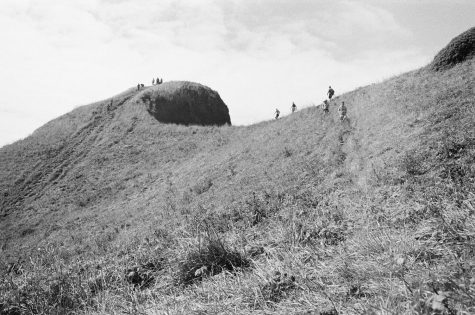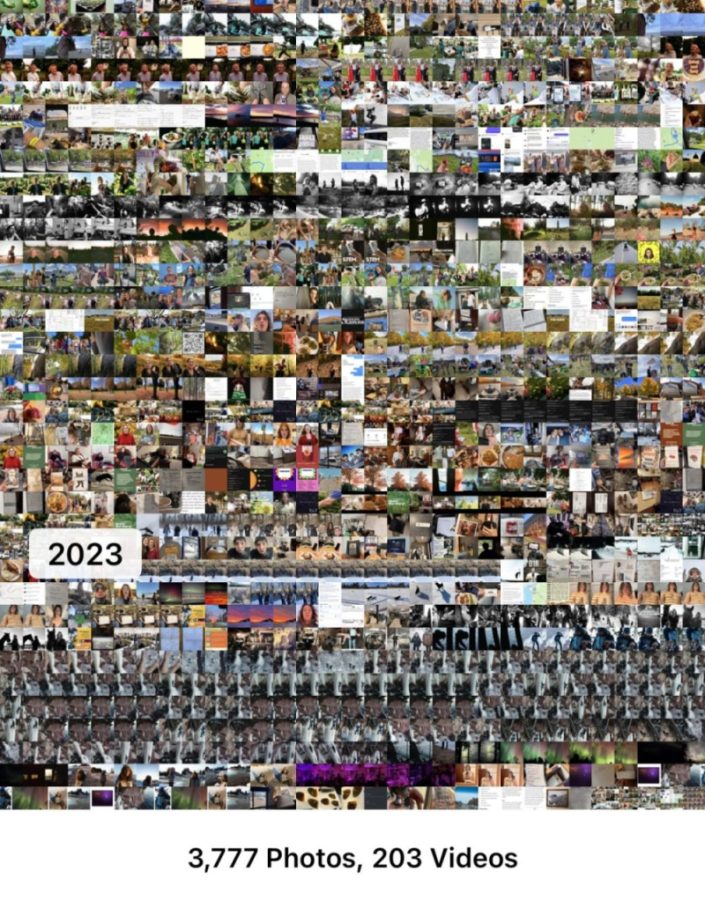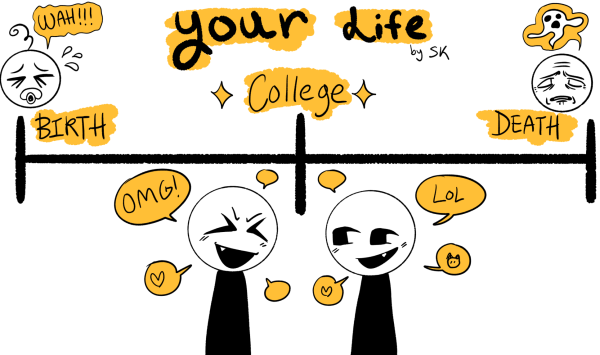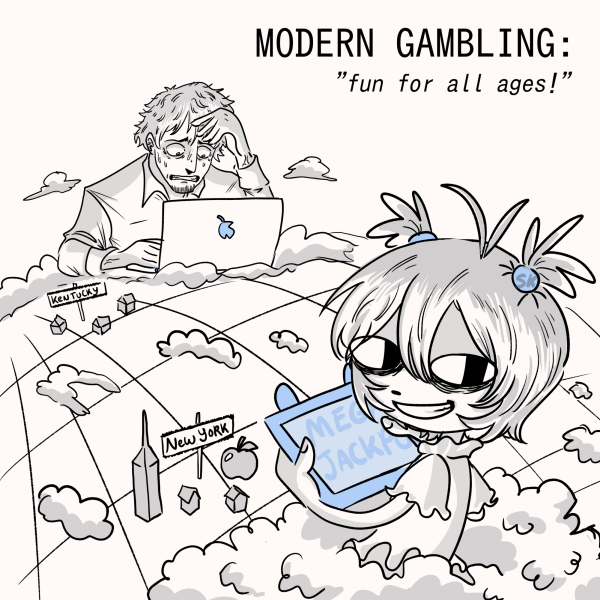Opinion — More is less: The problem with your camera roll
We have more photos than ever before, but are they doing us any good?
OVERABUNDANCE? — We’ve come a long way since scrapbooks and old slides. The average smartphone user has about 2,100 photos on their device.
April 8, 2023
I have one photo on my wall: it is a black-and-white landscape of a place called God’s Thumb in Oregon. It is summer, and my brother and his girlfriend appear as tiny figures, walking towards the camera over a grassy hummock that curls into the crook of a hand behind them.
I glance at it every day and sometimes will stare at it absentmindedly while doing yoga or putting off homework. It has become etched upon my brain. I can no longer tell whether it’s a good or bad photo — I took it so I’m inclined to think it’s good, but I have no objective measure for this.
It just is, plain and simple. It is a portal to a place, a memory, and it has begun to mean a lot to me — more than it did after I got that roll of film developed three years ago.

I have 3,777 photos in my camera roll. There are pictures of sunsets, accidental screenshots, a good chunk of my visual portfolio and some embarrassing photos of my face when I thought I looked particularly dashing. There’s also a frozen sweet potato, directions to a free campsite in North Carolina and a picture of hotdogs cut in the shape of octopi, just to name a few.
The average smartphone user has about 2,100 photos on their device, so I guess I’m an overachiever. But I know people that have eclipsed 10,000. And the number’s always going up. Sometimes we’re even forced to back up our growing catalog to old hard drives or ‘the Cloud,’ that formless repository of digital detritus that nobody understands, and you’re not supposed to ask questions.
People (including me) are documenting their lives more than ever before — first, there was a trickle, then a flood, then a bomb cyclone of photos and videos pouring into the Internet. But with an increase in volume, I find there’s been a decrease in meaning.
I thought that each one of those 3,777 photos was important when I took them, but upon review they all blur together. There’s the occasional pleasant pang of recognition or a photo that triggers a memory I thought I’d forgotten, but when I look back (and I seldom do) my eyes eventually glaze over and I scroll through my memories like I scroll on Instagram, hurrying to get to the next image that I’ll likewise hurry through — and on and on and on.
Most people can probably relate to the particular kind of exhaustion felt after an hour spent deleting photos from a camera roll, and at the end of that hard, Herculean labor we’re still left with thousands of files that we probably won’t see again for months.

I always tell myself that someday I’ll return to these images and be glad for them, but they keep getting buried. If I’ve taken almost 4,000 photos already, I will certainly take thousands, maybe tens of thousands more, and they will only bury the past even deeper.
I wonder if we’d be better served by a scrapbook, like the ones my mom has tucked away in a yellow plastic box in our basement. They never fail to make me stop in wonder at the past when I behold a young me and my brother or sister smiling out from thick pages she crafted with her hands. Then again, I recently spoke to a friend who says she looks at her camera roll often and finds joy in it — they are an extension of her memories, and now we can preserve more than we ever could before.

But for me, caught up in this panopticon of imagery, I find my memory falters. There are few stories that stick in my head, and only a handful that don’t have a picture to accompany them. Those photos in my camera roll usually aren’t stories, they’re bits and pieces or little moments that have become unstuck from their place in time and meaning.
The elders in my family all have stories. They tell and retell a few that are essential, with a moral and a beginning, middle and end, like my dad’s time in the hospital after he broke his neck or scenes from my mom’s first marriage.
I don’t have these kinds of stories. I am still young, but those memories I have that are worthy of a story lack definition and detail. Maybe I’ll fill those in as I age and assume that that’s the way they always were, but I doubt it. I’m afraid to grow old and look back on a past I don’t know, marked only by images of strangers in strange places.

Despite this diatribe, I haven’t yet convinced myself that our abundance of images is a bad thing. While writing this I perused my own and was occasionally delighted by the things I found there. Maybe stories will be replaced by photos and videos, and that is how we will remember our lives. More fragmented, yes, but also more vivid and accurate. But I question whether or not that’s a fair trade.
Instead of living memories, we have moments that are frozen in time. And a digital footprint is a mere smudge compared to the richness of life as it is lived and remembered.
Editor’s Note: The North Wind is committed to offering a free and open public forum of ideas, publishing a wide range of viewpoints to accurately represent the NMU student body. This is a staff column, written by an employee of the North Wind. As such, it expresses the personal opinions of the individual writer, and does not necessarily reflect the position of the North Wind Editorial Board.































